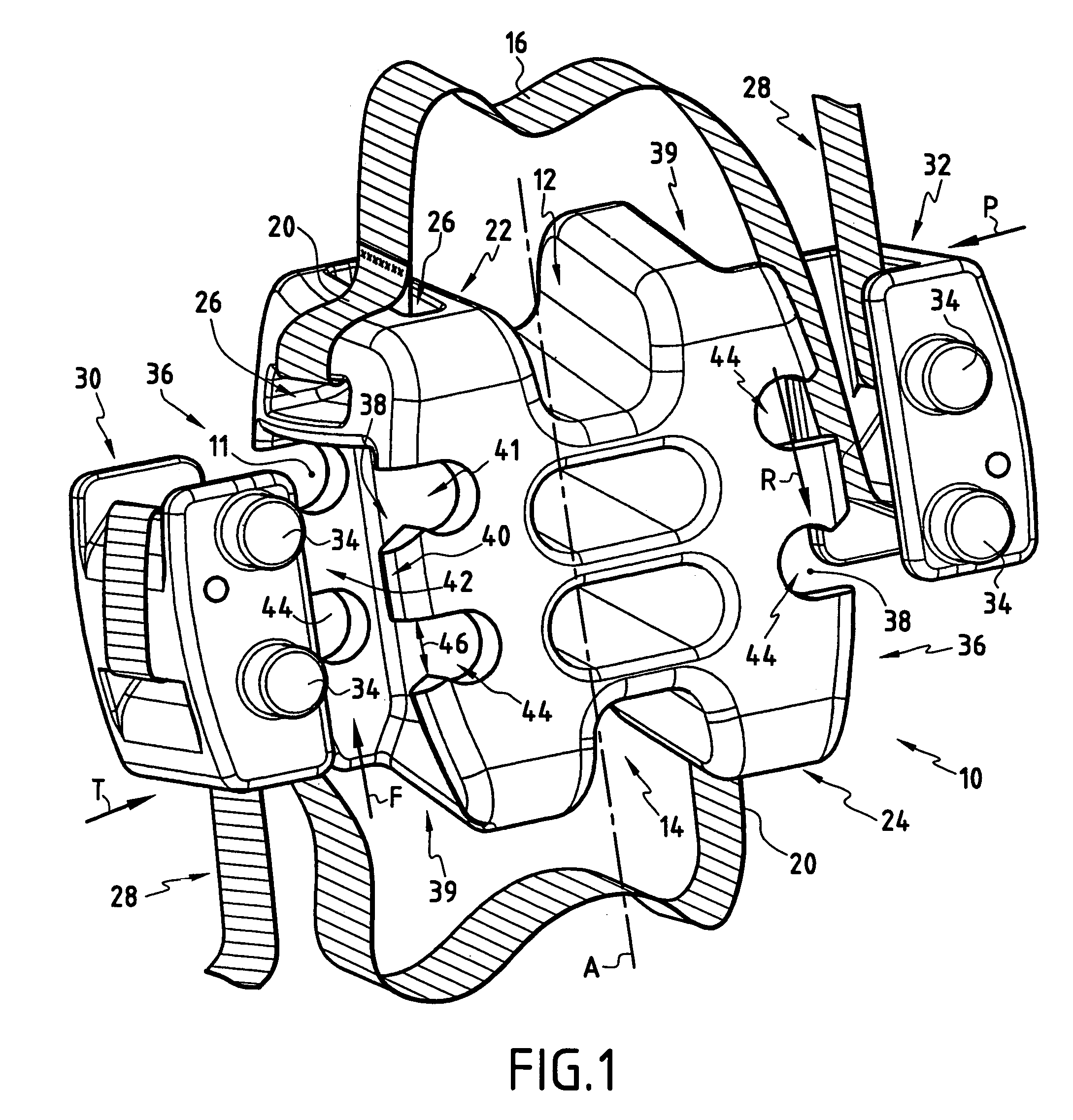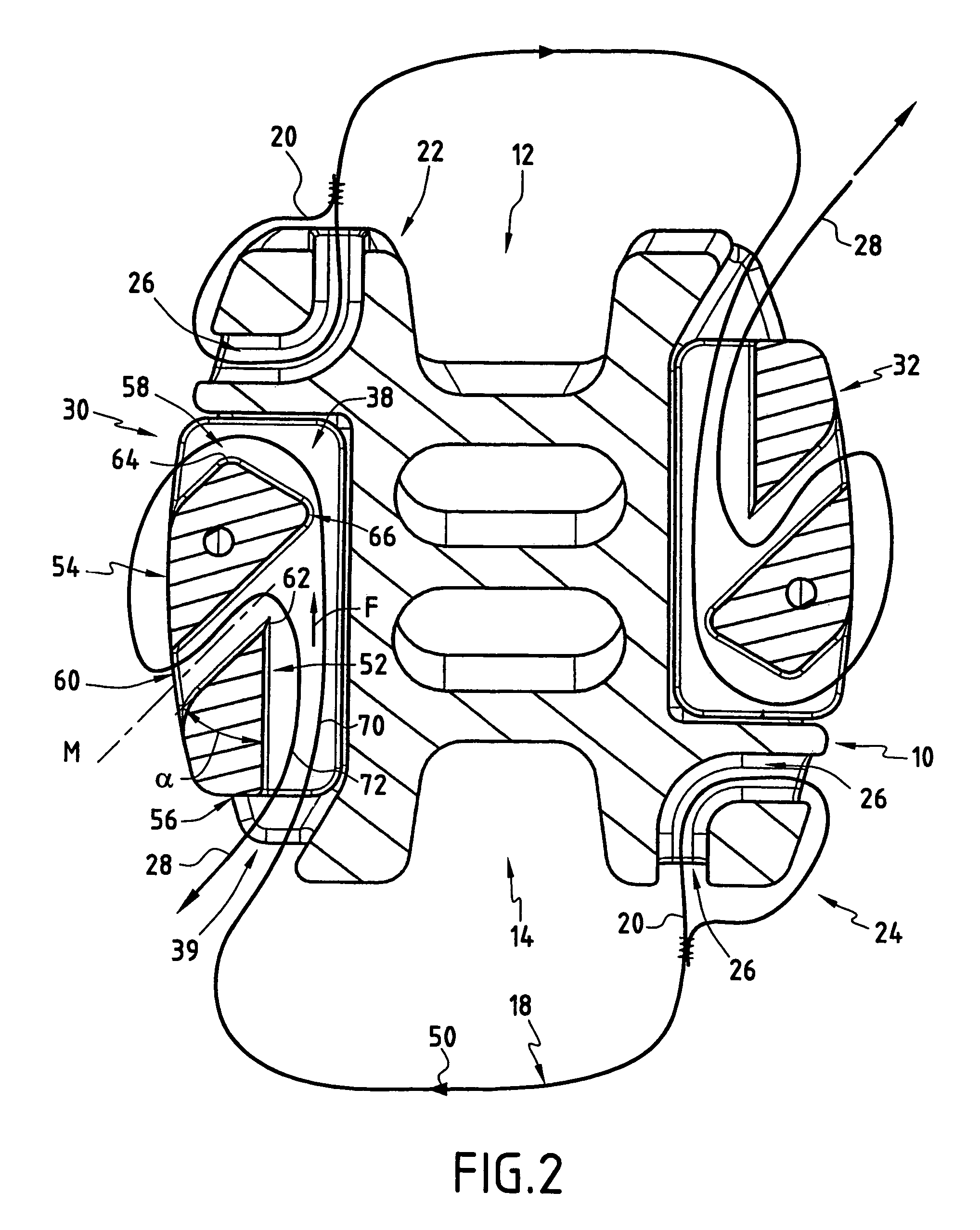Self locking fixable intervertebral implant
a self-locking, intervertebral implant technology, applied in the field of intervertebral implants, can solve the problems of forming loops and tying knots, affecting the fitting effect, and reducing the time consumption of tying knots, so as to facilitate fitting
- Summary
- Abstract
- Description
- Claims
- Application Information
AI Technical Summary
Benefits of technology
Problems solved by technology
Method used
Image
Examples
Embodiment Construction
[0021]FIG. 1 shows an intervertebral implant including a block 10 having a longitudinal axis A on which there are a top groove 12 and a bottom groove 14, the two grooves 12 and 14 being on opposite sides of the block. Each of the grooves 12 and 14 is adapted to receive a spinous process and the block is mounted between the spinous processes of two vertebrae to limit their movement towards each other.
[0022]The implant further includes two ties 16 and 18 in the form of tapes, and the first ends of these ties are connected to respective diagonally opposite flanges 22 and 24. The connection between the first end 20 of a tie and the respective flange 22, 24 is obtained by means of a bore 26 passing through the end of the flange 22, 24 and by sewing the first end to form a loop through the bore. As a general rule, the first ends 20 of the ties 16 and 18 are mounted symmetrically on the flanges 22 and 24 before starting the surgical procedure.
[0023]One feature of the implant is the method ...
PUM
 Login to View More
Login to View More Abstract
Description
Claims
Application Information
 Login to View More
Login to View More - R&D
- Intellectual Property
- Life Sciences
- Materials
- Tech Scout
- Unparalleled Data Quality
- Higher Quality Content
- 60% Fewer Hallucinations
Browse by: Latest US Patents, China's latest patents, Technical Efficacy Thesaurus, Application Domain, Technology Topic, Popular Technical Reports.
© 2025 PatSnap. All rights reserved.Legal|Privacy policy|Modern Slavery Act Transparency Statement|Sitemap|About US| Contact US: help@patsnap.com



